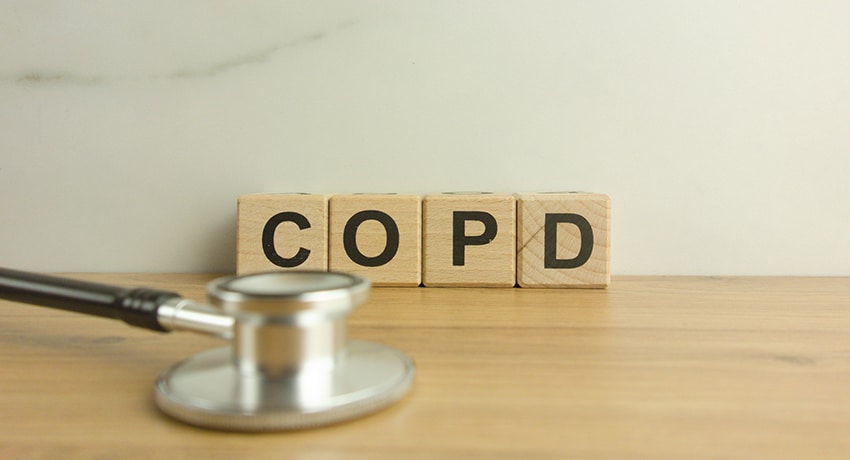The act of breathing is so involuntary, few people rarely even think about it. But for those who suffer from chronic obstructive pulmonary disease (COPD), the challenge of taking oxygen into the lungs can be a daily struggle, with every breath requiring effort.

UT Physicians pulmonologist Brandy J. McKelvy, MD, explains that COPD is a spectrum of progressive lung disease, which includes chronic bronchitis and emphysema.
“The condition causes obstruction to breathing, making it extremely difficult to take in sufficient air and oxygen to the bloodstream,” McKelvy said, who is an associate professor at McGovern Medical School at UTHealth Houston. “When the lung airways become too narrow, inhaling and exhaling are strained and can worsen over time.”
McKelvy adds that a range of external factors can contribute to the disease, the most prevalent being persons with a history of cigarette and tobacco smoking.
“The toxins and carcinogens contained in smoking products damage the cilia and air sacs in the lungs, reducing optimal function of the airways. Second-hand smoke can also cause a development of COPD, as well as exposure to harmful irritants such as heavy chemicals, cooking over open fires, and air pollution.”
Because it progresses over years of time, COPD symptoms tend to be less noticeable in its early stages.
“Once COPD becomes advanced, its typical symptoms include chronic fits of coughing, wheezing, increased mucus production, and shortness of breath,” McKelvy said. “These symptoms can be controlled with the use of inhalers, oral steroids, and antibiotics to minimize inflammation. Bronchodilators can also open airways and improve respiratory function.”
November is National COPD Awareness Month. According to the National Institutes of Health, nearly 16 million people in the U.S. suffer from the serious lung disease.
Treatment and tips on care
No cure currently exists for COPD. Likewise, the harm to the lungs caused by smoke inhalation is irreversible. McKelvy encourages screening for early detection and smoking cessation as the best ways to slow progression of the disease.
“Those with histories of tobacco abuse or shortness of breath should undergo a pulmonary function test to assess the severity of the disease,” McKelvy said. “Additionally, the oxygen level of the individual should be checked to determine if there is a condition of hypoxemia, where oxygen levels in the blood are lower than normal.”
Patients with COPD with low oxygen saturations are typically prescribed supplemental oxygen for breathing or use oxygen concentrator devices to filter purified oxygen into the lungs to manage COPD symptoms. Another option is referral to a pulmonary rehabilitation program, which is an organized exercise program that can improve shortness of breath and cardiovascular function. In severe cases, a lung transplant procedure may be considered if deemed necessary.
As preventive measures, McKelvy recommends the following:
- Vaccinations for influenza, COVID-19, and bacterial pneumonia. Getting these shots regularly is critical to steering clear of infection, hospitalization, and possibly death.
- Monitoring outside exposure. On days reporting heavy air pollution or ozone alerts, patients diagnosed with COPD should avoid going outside, as such exposure can worsen symptoms.



